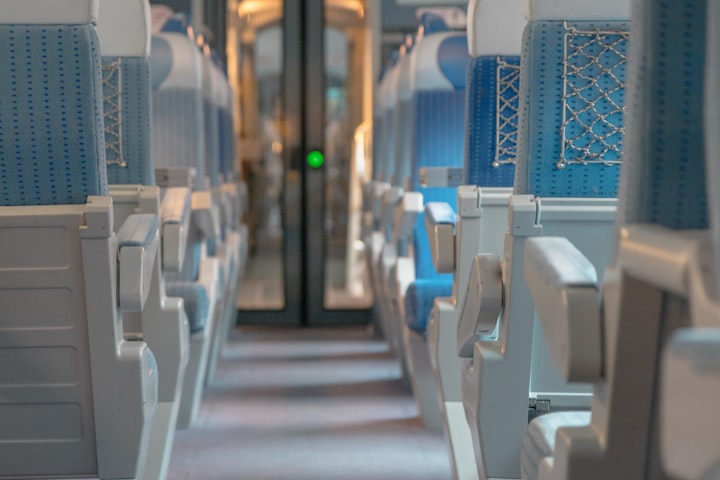A Day in the Life of a Railcar Inspector
Tools and Tips for Success

As dawn breaks over the rail yards, a quiet but critical mission unfolds—one that ensures the lifeblood of our economy flows uninterrupted.
Meet the railcar inspector, a guardian of the rails, whose meticulous eyes and skilled hands keep thousands of tons of steel hurtling safely across the country every day.
In this post, we'll dive deep into the day-to-day activities that define this vital role, unpacking the tools and techniques that stand between routine travel and unspeakable disaster. From the standard Railcar Inspection Checklist to the cutting-edge technology transforming the trade, join us on a journey through a day in the life of a railcar inspector, where safety and precision meet at the crossroads of critical transport.
Morning Routine: Starting the Day
Pre-Shift Preparation
The day begins with a pre-shift briefing. Inspectors review the day’s schedule, focus on specific railcars needing attention, and update on any ongoing issues from previous inspections. This preparation is critical for setting the day's priorities and ensuring all necessary tools and safety gear are ready.
Tool Check
Before heading out, inspectors ensure their toolkits are complete and functional. Essential tools include ultrasonic testers, brake stick, wheel gauges, and flashlights. Ensuring that these tools are in working order is crucial for the detailed inspections that lie ahead.
Mid-Morning Activities: Getting Down to Business
Conducting Thorough Inspections
Using the Railcar Inspection Checklist, inspectors methodically work through each car. They check structural integrity, brake systems, wheels, and undercarriage components. Each item on the checklist is meticulously examined to ensure no aspect of the railcar's safety is compromised.
Documenting Findings
As issues are identified, inspectors make detailed notes in their digital devices or inspection forms. These records are vital for maintenance teams and for complying with safety regulations. Documentation must be precise to ensure accurate follow-ups and repairs.
Afternoon Tasks: Deep Dives and Problem Solving
Focused Inspections
After general inspections, inspectors often return to cars that require a more detailed examination. This might involve using advanced diagnostic tools to investigate unusual wear patterns or sounds identified during the initial checks.
Collaboration with Repair Teams
Inspectors frequently collaborate with maintenance crews, advising on the urgency of repairs and verifying that fixes meet safety standards. This teamwork is crucial for keeping railcars in service and minimizing downtime.
Late Afternoon: Wrapping Up and Planning Ahead
Reviewing the Day’s Work
Towards the end of the shift, inspectors review their findings with team leaders. This session helps prioritize the railcars that need immediate attention and plan the next day's inspection schedule.
Continuous Learning
Staying updated with the latest inspection techniques and safety protocols is part of the daily routine. Inspectors might spend time studying new regulations, attending workshops, or learning about new tools that can enhance their inspection processes.
Challenges Faced by Inspectors
Navigating the Life of a Railcar Inspector presents unique and often demanding challenges that test their resolve and expertise. Battling the elements is a daily reality. Inspectors find themselves conducting meticulous checks amidst roaring winds, pelting rain, or oppressive heat, a testament to their dedication and endurance. The unpredictability of weather adds a layer of complexity to their already intricate tasks.
Equally taxing are the encounters with aging railcars that whisper the tales of a bygone era. These veterans of the tracks bring their own set of puzzles—obsolete components and unusual wear patterns that aren't found in modern manuals. Inspectors must channel their inner detectives, using a blend of historical knowledge and innovative problem-solving to ensure these old souls meet today’s rigorous safety standards.
Then there's the race against time. The pressure of keeping the trains running on schedule means every second counts. Inspectors must balance the thoroughness of their work with the relentless tick of the clock, making swift, yet accurate decisions. This high-stakes balancing act not only ensures the safety of thousands but also tests the limits of their skills and efficiency.
End of The Day
As the sun sets on the rail yards, the day's work for a railcar inspector draws to a close, but the wheels of progress never stop turning. Every bolt inspected and every anomaly noted forms the linchpin of our rail system's safety and reliability. This post has walked you through the vital routines and indispensable tools that make the job of a railcar inspector not just a profession but a pivotal service to society.
We invite you to share your insights or express your curiosity in the comments below. Whether you're a fellow inspector with experiences to share, or simply a rail enthusiast eager to learn more, your perspectives enrich our discussion and deepen our understanding of this critical field. Join the conversation and help us keep the wheels smoothly—and safely—in motion.
About the Creator
Reader insights
Outstanding
Excellent work. Looking forward to reading more!
Top insights
Expert insights and opinions
Arguments were carefully researched and presented
Eye opening
Niche topic & fresh perspectives






Comments (1)
Great piece of work great job